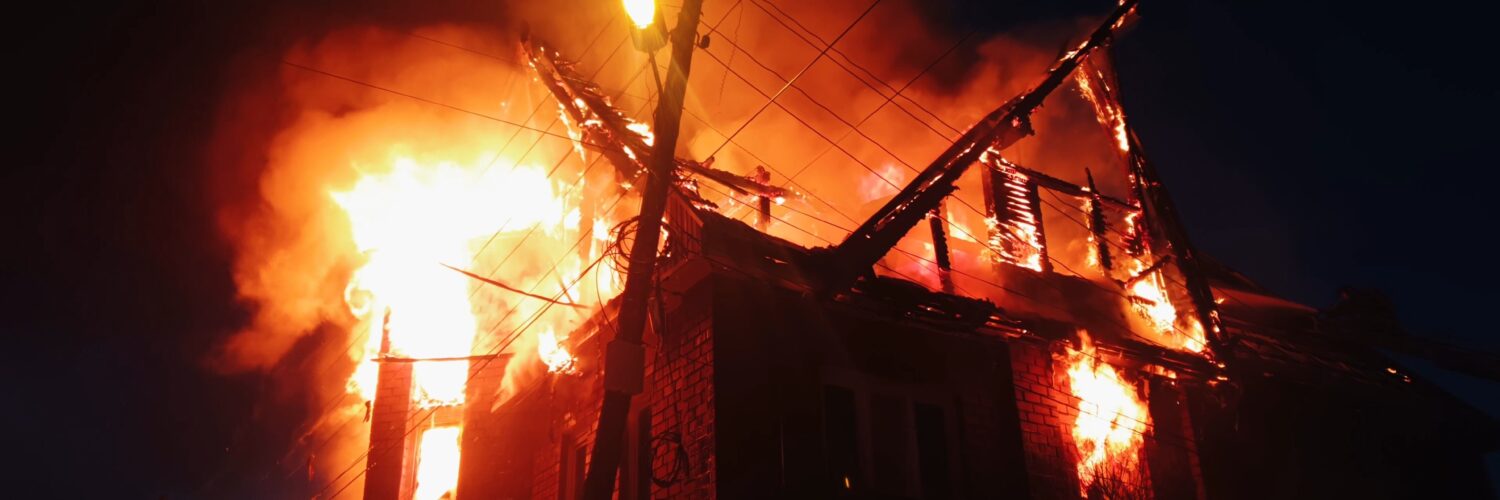Deliberately igniting property, known as arson, is a grave offense that leads to monumental property damage each year, with financial losses reaching into the billions. There is a myth regarding Arson Investigations, that not many cases are solved. According to John Hall, Jr., Ph.D., at Fire Research & Analysis Division – While it is true that the fraction of all arsons solved by arrest ranges from 15 to 20 percent, this is the same solution rate that applies to all major property crimes, which tend to go unwitnessed.
All Arsons are Fire; Not All Fires are Arson!
The occurrence of a fire does not immediately point to arson. Fires can erupt due to a variety of reasons, from accidental mishaps to natural disasters. However, once the flames are extinguished and the smoke clears, certain telltale signs may emerge that suggest a fire was not accidental but rather the result of deliberate human action. These signs, detected amidst the charred remnants, can provide the first clues in the pursuit of an arsonist.
Among the potential indicators of arson are abnormal burn patterns, signs of forced entry, an unusual absence of valuable items, and the presence of fire accelerants, substances used to quicken the spread of flames. Other signs may be more subtle but no less important. These include a lower than expected point of burning, multiple separate origins of the fire, and behavior of the fire that deviates from what would be expected given the conditions. These clues, while varied, all suggest a common possibility: the fire may not have been an accident but a crime, a deliberate act of arson. The detection of these signs forms a critical part of the investigative process, setting the stage for a deeper, more detailed examination.
Who Conducts Arson Investigations?
Arson investigations are specifically designed to uncover the true cause of a fire and ensure those responsible are held accountable. Leading these investigations are seasoned professionals, often retired firefighters, or former fire marshals who bring their wealth of experience and deep understanding of fire behavior to the task. Their expertise extends to the properties of various fuel types, including how they ignite, how they accelerate a fire, and their specific roles in the development of a fire. With their comprehensive knowledge, these investigators can delve beyond the surface, deciphering the fiery code to distinguish an accident from arson, and ensure justice is served or insurance covers the losses.
How Does the Investigation Typically Work?
Fire destroys… that’s a given. So, when a fire breaks out, it often leaves behind a scorched landscape where physical evidence can be entirely destroyed. In addition, the necessary firefighting efforts can further compromise any potential evidence, washing it away or drowning it beneath layers of debris. Amid this decimated scene, the task of an arson investigator is a daunting one. They must sift through the ruins seeking traces of evidence that can help them piece together the puzzle.
Witnesses:
When this happens, they need to start to look for witnesses. While no one may have witnessed the fire start, the first responders – the firefighters, become some of the most reliable witnesses. Their observations and experiences at the scene, what color was the smoke? Were the doors damaged? Were the windows in place? Did they see anyone in the area? What was the fires’ behavior? All of these are questions that become invaluable to solve the investigative jigsaw.
Origin:
Once these initial accounts have been gathered and the fire’s behavior assessed, investigators delve deeper, turning their attention towards finding the fire’s origin. This pursuit is a meticulous one, requiring a keen eye for detail and a deep understanding of fire dynamics. They document any surviving physical evidence that might suggest an ignition source or an accelerant. Photographs are taken, samples are collected, and every detail, no matter how small, is noted. Using this gathered information, investigators reconstruct the sequence of the fire’s development, from ignition to full development. By applying the principles of fire science, they can then evaluate whether the evidence supports or contradicts the hypothesis of arson.
Motive:
Beyond the physical evidence and the fire’s behavior, investigators also turn their gaze to the potential motives behind arson. Arson is a crime of intent, and therefore understanding the ‘why’ is often as important as understanding the ‘how’. The motives for committing arson are as varied as they are complex, ranging from simple acts of vandalism or thrill-seeking to more sinister intents like crime concealment or insurance fraud. Others might be driven by a desire for revenge, a craving for attention, political motives, or even suffer from mental disorders like pyromania. By examining the circumstances surrounding the fire and understanding the potential motives, investigators can build a more comprehensive picture of the incident, leading them closer to uncovering the truth.
Navigating the Aftermath: What Happens if My House Catches Fire?
The sudden occurrence of a fire can be an overwhelming experience, particularly if it’s your own home that has been affected. It’s natural to be concerned and filled with questions, one of which may be: Will I be considered a suspect in case of arson?
In the aftermath of a fire, it’s essential to understand that the investigative process is designed to establish facts, not to accuse innocent victims. The primary focus is to determine the cause of the fire, be it accidental or deliberate. It’s worth noting that not every fire is a result of arson. If arson is suspected, investigators will be looking at a multitude of factors, including motive, opportunity, and evidence, before identifying a suspect.
Most insurance companies will reach out to the Fire Marshall after a fire takes place. If for whatever reason the Fire Marshall thinks there was foul play, you can hire an attorney to help you work through the issues. The attorney will then hire an Arson Investigator to come to your defense. An experienced investigator can help gather robust evidence for your case. Their comprehensive understanding of fire behavior, along with the ability to identify and interpret the subtle signs of arson, can help demonstrate your innocence and protect your rights.
Investigators may reach out to witnesses, as labeled above, and may even interview the Fire Marshall (or agent) who handled the Arson Investigation. An attorney would then take over the case and start their investigative process – a topic for another article.
Let’s assume that no arson was suspected, but the insurance the insurance company decides that they’re not going to fully compensate you for your damage property. In that case, an Arson investigator can help ensure you receive the correct insurance compensation for your damaged property. This is achieved by accurately identifying the cause of the fire and the extent of the damage, information that is critical for insurance claims.
Overall, arson and its investigation elements are complex, often involving a web of evidence, motives, and circumstances. By understanding the intricacies of this process, we can better appreciate the crucial role of arson investigators. These professionals, with their relentless pursuit of evidence and justice, stand as a bulwark against the devastating impact of fire investigations and arson. They work tirelessly not only to bring the guilty to account but also to provide reassurance and support to the innocent victims, helping them navigate through the aftermath of a fire with understanding and compassion.






